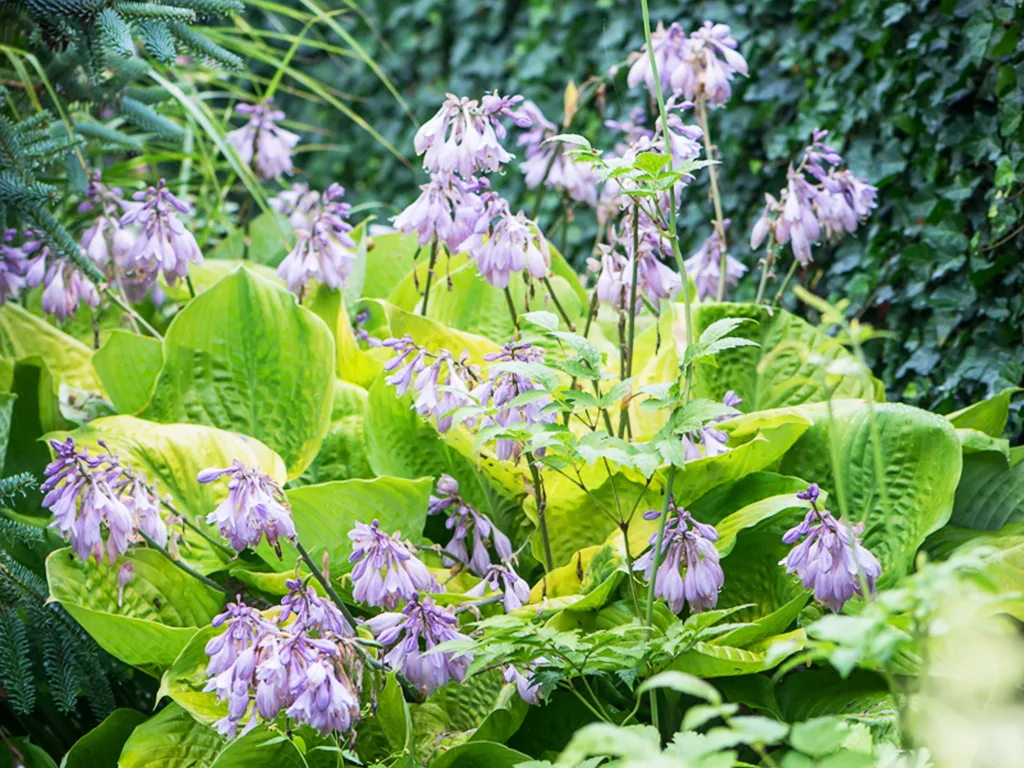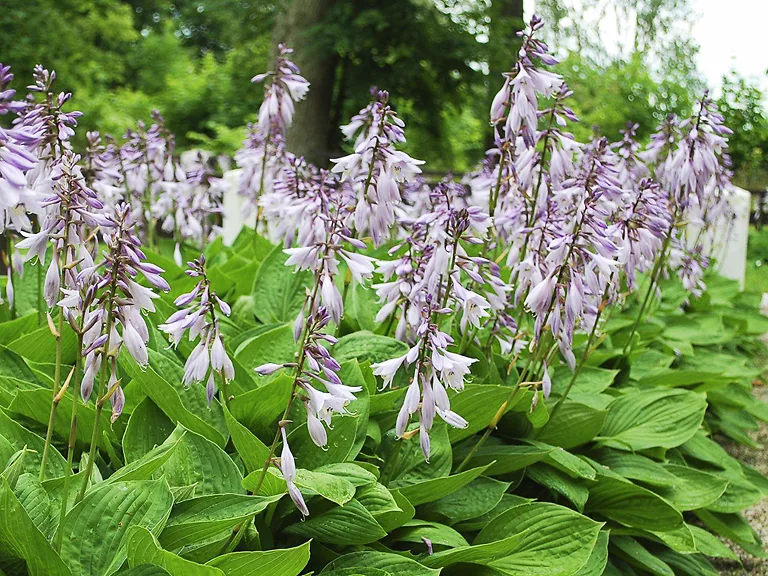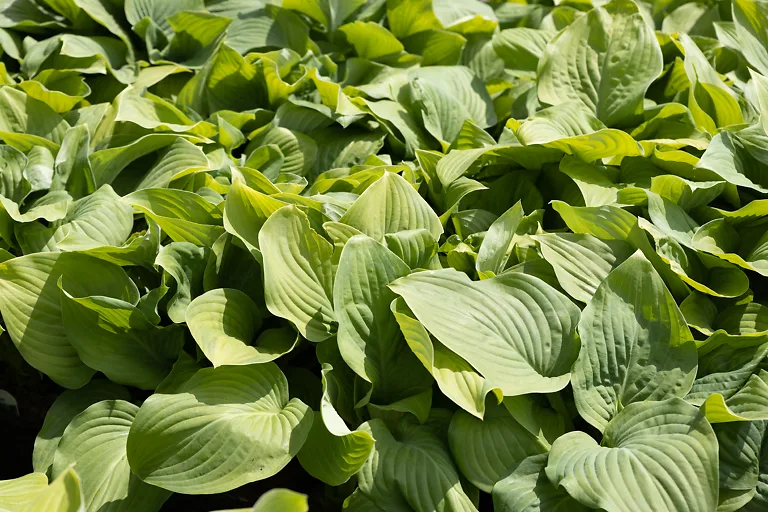
Written by s • Florence Shaw and Hosta Secrets
The world of gardening is always portrayed as wonderfully calm and ‘natural’, away from the rush, bustle and competition of life. For those who simply grow their garden, that may largely be true, but when we enter the professional world, things change, although the image remains. Forget about the obvious growth of large corporations for a moment, though, and turn to the more rarified world of plant breeding.
Almost all the plants we grow are not as Nature made them – it is reasonable to see garden plants as works of human ingenuity and art. Dedicated people put many hours into breeding and hybridizing, crossing one plant with another, just to see what happens, or often in search of some specific dream of a ‘better’ plant. Sometimes breeders are trained professionals, but for many of our plants – daylilies and hostas for example – much of the work that has given us thousands of spectacular plants has been done by dedicated amateurs.
We might think of these people as benign artists, creating a more beautiful world. Many are just that, but the human passions of competition, glory and the desire to be famous have often entered into the mix, even if people have tried to keep it out. Add in the neglect of the contribution of women in art and science, today a hot topic but once just a ‘fact of life’, and you find some fascinating tales. One that is little-known outside the world of hosta is the story of Florence Shaw and Paul Aden.
Florence Shaw
The world of hosta is one of many skilled amateur breeders. Until recently, one of the least known was Florence Shaw, a private person who worked it seems for her own pleasure, without any desire for fame or glory.
Florence Shaw was privileged. Her husband, Samuel Parkman Shaw, was from a prestigious Boston family, and the couple lived on large estate of several acres in Weston, Massachusetts, an upscale town. The estate, called Birchwood, is today obscure, and was probably subdivided into suburban homes. As was normal in those times, Samuel probably travelled into Boston for business each day, while Florence was left to her own devices. Like many women of her class she joined the Massachusetts Horticultural Society, and worked on the gardens. There she built a collection of rare plants and unusual varieties, so that it became famous as a great garden of the times. So much so that the society gave her an award in 1970 for her outstanding plant collection. She was know to everyone as modest, kind-hearted and very generous.
While the garden was young she grew iris, and bred new varieties. At the time this was another plant genus popular with amateur breeders. When her trees grew larger there was too much shade for iris, so she began to grow hosta.
At that time there were very few available, and they were not considered very significant at all. Only 50 years earlier they didn’t even rate an entry in gardening books, and not much had changed. She had what was available – ‘Elegans’, ‘Francis Williams’, ‘Lancifolia’, some Hosta sieboldii, especially a steaked variety called ‘Marble Rim’, and Hosta plantaginea, with its fragrant flowers. Using her rare plant connections she was able to acquire plants of rare varieties from Japan, including H. nakaiana, ‘Elatior’, and a rare gold-leaf plant called ‘Bengee’.
The details of her breeding would only be of interest to hosta enthusiasts, but she grew new seedlings of plants with golden leaves and others with large blue leaves, that were used by others to make many of today’s varieties. Names like ‘Sum and Substance’ (her most famous), ‘Blue Angel’, ‘Love Pat’, and her personal favorite, ‘Birchwood Parky’s Gold’ (named after her husband, who, was known as “Parky”), as still popular today, and widely-grown. At the time she only shared her plants with other enthusiasts, and yet it is widely-recognized today that she advanced hosta breeding enormously in the few years she dedicated to it. So much so that she deserves to be known as a foundational breeder in the development of the modern hosta we all know and love.
In 1968 the American Hosta Society was formed (by Alex Summers), and Florence was the 13th member. A few years later, in 1974, Florence passed away, and the Hosta Society began its registration process. The timing was unfortunate because it meant that none of the varieties she bred were ever registered in her name. This is where a story of loving plants and breeding them for pleasure becomes ugly.
Paul Aden
Aden lived in Baldwin, New York, and is still widely regarded as the ‘King of Commercial Hostas’. Even though the origin of his varieties has been thrown into serious doubt, his eye for good plants was certainly accurate, and his publicizing and spreading these plants played a huge role in their popularity. But personally he was openly despised by many of the most prominent people in the Hosta world, and rumors and innuendo spread about him even while he was alive. One clue was the relatively small size of his gardens. It would be impossible to create the almost 200 varieties he was once credited with, without growing thousands of seedlings in an organized, detailed with, with record-keeping and large beds. Yet there was almost no sign of this at his property. When pressed he would say he had ‘secret seedling beds’ somewhere else, away from the prying eyes of potential rivals. Since no one ever saw those beds, they remain hidden from history.
It is certainly true that Florence Shaw gave Aden some plants, and he seems to have been at Birchwood shortly before or after her death. Whatever the details, those who have an eye for such things are certain that many of the plants he introduced as his own through the last decades of the 20th century bear uncanny resemblances to plants given by Shaw to collectors she new. Indeed, Aden started out badly, because his first registration was for ‘Blue Cadet’, a plant already known to have been bred by Florence Shaw. Yet on the original registration card her name is missing. Several other varieties definitively known to be Shaw’s were also claimed by him – and how many others?
It seems that Aden didn’t take credit only from Florence Shaw. He also registered plants bred by Dr. Kevin Vaughn, a USDA scientist and scientific editor for the Hosta Society Journal. Although the executive of the Hosta Society knew early on that Aden was taking credit that wasn’t his, they kept quite – Aden just became increasingly ostracized, stopped attending meetings and stopped registering any plants after 1990. He probably made significant amounts of money from royalties and selling new varieties privately, and as a schoolteacher that money would have meant something to him.
Aden died in 2010, and the board of the American Hosta Society established a commission to investigate ‘his’ plants. They assigned some to other breeders, chiefly Florence Shaw, but left many as ‘unknown’*. Some blame the society board for colluding with him, and in the process damaging their own reputations, but time moves on, and what was once a hot topic becomes part of an interesting history, one that turns upside down the vision of ‘plant people’ as all kind, generous and lacking in the ambition that drives others into creating business empires or conquering countries.
A big ‘thank-you’ to Bill Meyer, hosta guru from New Jersey, for his hard work and knowledge in uncovering the Shaw/Aden affair – most of the content of this post is derived from his articles on hostalibrary.org
*A summary of the details of the current position of the Hosta Society on the attribution of Paul Aden varieties, and who likely bred what, can be found here: https://www.americanhostasociety.org/AHSMembers/OnlineJournals/44/AdenOrigins.html







